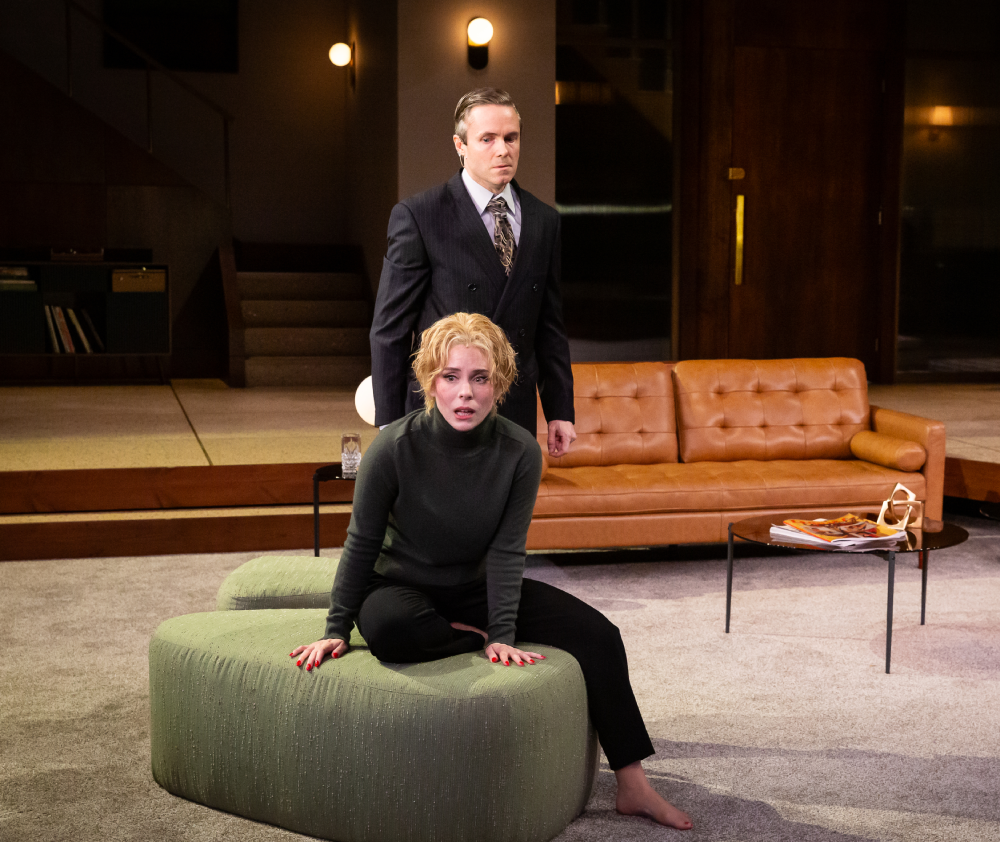A History of Murder

It’s a familiar formula: in the wake of its success, a great work of theatre is adapted for the screen. Plays like A Streetcar Named Desire, Driving Miss Daisy and The Odd Couple are overshadowed by their more famous counterparts on film, which have nearly supplanted the live version in the minds of a modern audience. In most cases, the film version arises only after a successful run of the live show. This is not the case with Dial M for Murder, which has a much more complicated relationship between stage and screen.
Though Frederick Knott initially wrote Dial M for Murder as a stage play, he struggled to find a theatrical producer in London. It wasn’t until a friend suggested that he pitch it to the BBC that Dial M was put before the British public — namely, the audience of the very popular television program BBC Sunday Night Theatre. This televised version of the play was such a hit that several managers immediately sought the stage rights. This resulted in the first onstage production in 1952, less than a year after the initial televised broadcast. Coincidentally, this was the same year that Alfred Hitchcock scrapped an unfinished thriller called The Bramble Bush, leaving him in need of a new story about a murder.
Hitchcock’s blockbuster adaptation of Dial M for Murder premiered in 1954 to wild acclaim. He stayed true to Knott’s text but infused the piece with a visual sensibility that reflected film noir, thriller and horror impulses of the period: low angles, chiaroscuro lighting (a technique to achieve high contrast) and tight closeups that increased the sense of anxiety and neurosis. This film adaptation quickly became the definitive version of the story, and the first thing most people think of when they hear the phrase “Dial M for Murder.”
Cincinnati Playhouse in the Park’s production of Frederick Knott’s masterwork — a co-production with Alley Theatre in Houston — pays homage to the play’s history, in which stage and screen are inextricably linked. Scenic design by Marcelo Martínez García attempts to replicate Hitchcock’s disorienting angles, by placing a lush mid-century apartment just askew of the proscenium. The design also features a bold filmic gesture that dominates the space: the word “murder,” in block letters, floating above the stage like a title card.
.png?sfvrsn=ac45080_1)
Cincinnati Playhouse in the Park/Alley Theatre co-production of Dial M for Murder. Photo from Alley Theatre by Lynn Lane Photography.
Director Tatiana Pandiani offered this reflection on the set design process: “We ended up with this giant red murder sign that was the final product of a lot of investigation of letters on London buildings. Neon lights on London buildings. Corners, traditional corners in London that have neon lights and neon letters. We went through a lot of variations of this. There's a version where we had the letters vertical instead of horizontal, one where house left it said DIAL M and house right it said FOR MURDER. There were a lot of variations.”
The filmic effect is further highlighted by Yuki Link’s meticulous lighting, which recreates noir visuals by placing lighting instruments at low angles and allowing stark beams to stream horizontally through windows, doorways, and any other available aperture.
“Yuki and I did talk a lot about Hitchcock's lighting in all of his films,” said Pandiani on developing the lighting design. “That was something we pulled from the aesthetic. Really leaning into that. A lot of times theatrical lighting is like, ‘Turn on all the lights so everyone can see!’ And actually, with this process, this design is not that at all. There's a lot of intentional shadow; there's a lot of shadowy areas and actors that move through the light into the shadow. There is a lot of what's called high contrast lighting. That's an aesthetic choice that of course is a very Hitchcock thing that we pulled from. Dial M the film, but also his entire body of work.”
.png?sfvrsn=5ac45080_1)
Geena Quintos (Maxine Hadley) and Teresa Zimmermann (Margot Wendice) in the Cincinnati Playhouse in the Park/Alley Theatre co-production of Dial M for Murder. Photo from Alley Theatre by Lynn Lane Photography.
The result is a sleek production, replete with visual gestures usually reserved for the silver screen. This updated look is complemented by an updated text from playwright Jeffrey Hatcher, who has imbued Knott’s genius storytelling with a modern feel. Hatcher’s new adaptation centers and highlights the female characters, subverting expectations of the 1950s period while still staying true to the iconic play (and film) that is Dial M for Murder.
Cover Photo of Teresa Zimmermann (Margot Wendice) and Brandon Hearnsberger (Tony Wendice) in the Cincinnati Playhouse in the Park/Alley Theatre co-production of Dial M for Murder. Photo from Alley Theatre by Lynn Lane Photography.
Bradley Michalakis is Head Dramaturg at the Alley Theatre, Houston.